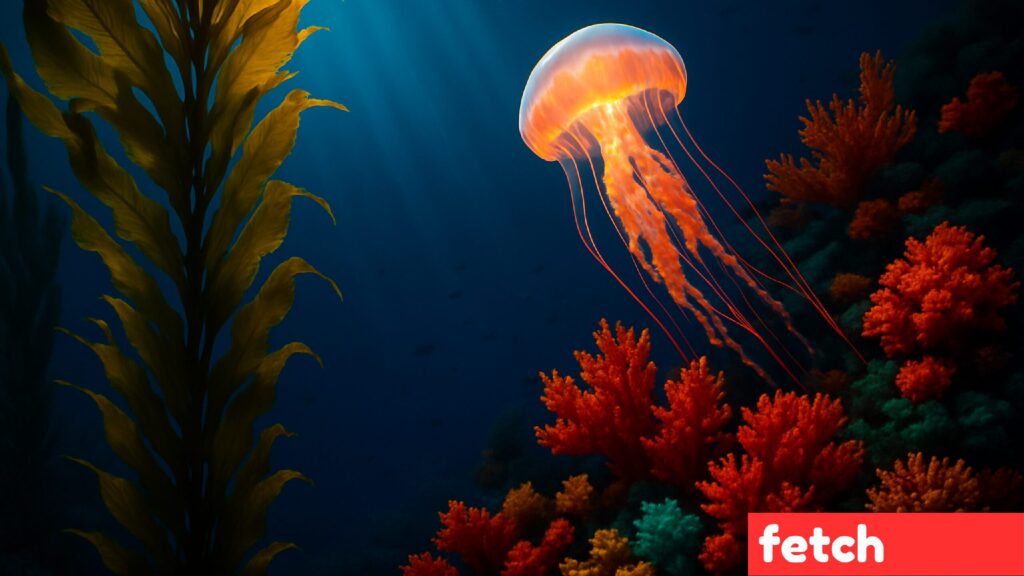
It’s easy to look up at the night sky and feel a rush of wonder, but what if the real mystery isn’t above us, it’s below? While space gets the glory with its black holes and intergalactic glamor, Earth’s deep ocean remains a largely unexplored frontier, hiding some of the most alien lifeforms and extreme environments right here on our home planet. Over 80% of the ocean is still unmapped, and much of it lies in crushing darkness so inaccessible that it’s been visited less frequently than the Moon. Yet beneath the waves, nature gets weird, bioluminescent, and wildly intelligent in ways that rival, and often outmatch, anything we’ve found beyond Earth’s atmosphere.
From pressure levels that would implode a submarine to creatures that glow, regenerate, or live for centuries without light, the deep sea is a masterclass in evolutionary magic. And unlike space, which remains mostly theoretical for the average person, the ocean is something we can dive into, study, protect, and even touch. So before we book a ticket to Mars, here are seven reasons why the deep ocean might just be the most magnificent mystery we’ve got.
1. We Know Less About It Than the Surface of Mars
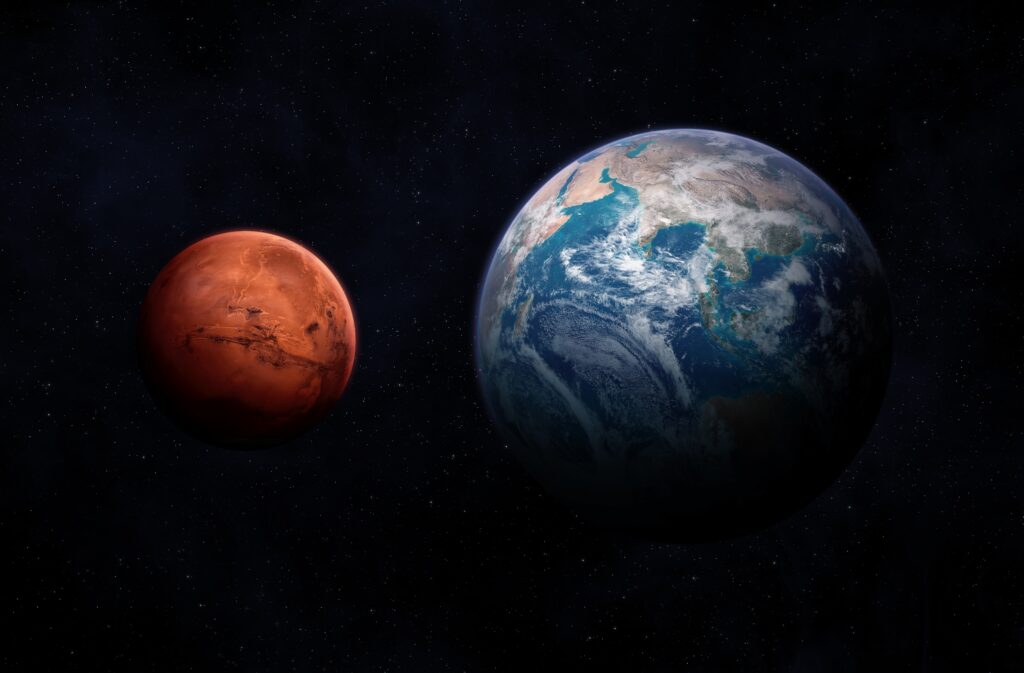
Despite covering more than 70% of Earth’s surface, the deep ocean is one of the least explored regions on the planet. In fact, we’ve mapped just 24% of the seafloor using modern sonar, compared to 100% of the surface of Mars. It’s a dark, crushing, and freezing landscape that starts around 650 feet down and keeps going for miles, home to trenches deeper than Everest is tall. The pressure can exceed 16,000 psi in some parts, and sunlight disappears entirely just a few hundred meters below the surface. That leaves scientists using deep-diving drones, pressure-resistant robots, and even decades-old data to piece together what’s happening in the abyss.
The result? Every time we go down there, we find something new—sometimes entire species never seen before. In 2023 alone, NOAA’s Okeanos Explorer discovered more than 30 potentially new species in a single expedition near the Mid-Atlantic Ridge. These aren’t just obscure worms and blobs, some have iridescent bodies, jellyfish that pulse like galaxies, and fish with transparent heads that let them see upward into their own skulls. Compared to space, where discoveries often involve math models and distant blips on telescopes, deep sea science is thrillingly physical. It’s touchable mystery, and we’ve barely scratched the surface. Source: NOAA Ocean Exploration
2. Creatures of the Deep Are Stranger Than Aliens
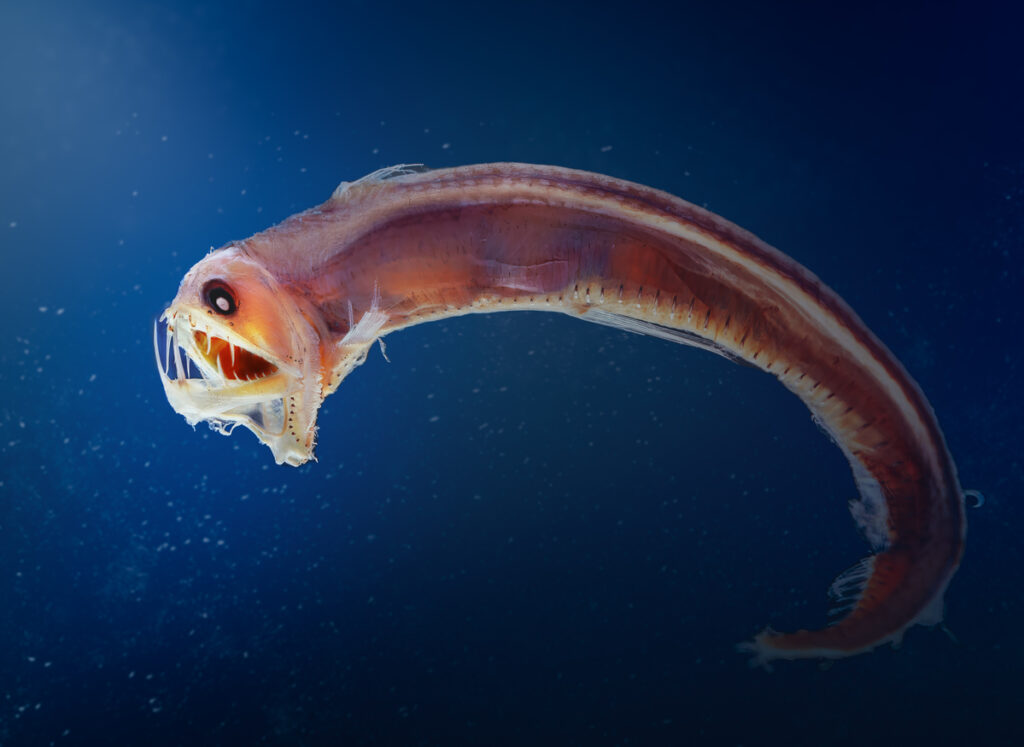
Think aliens are weird? The deep ocean is already packed with lifeforms so bizarre, they make sci-fi monsters look tame. Down in the hadal zone—depths below 20,000 feet, you’ll find fish that produce their own light, octopuses that shape-shift, and faceless creatures that have no eyes, no mouth, and no obvious front or back. Some deep-sea jellyfish have 12-foot-long tentacles that spiral like living chandeliers, while others inflate into giant, glowing balloons when threatened. There’s even a species of sea cucumber that “walks” across the ocean floor on tiny legs like a vacuum from another dimension.
Perhaps the strangest of all is the barreleye fish, which has a transparent dome of a head—so you can literally see its eyes swivel around inside. These creatures aren’t just freaky for fun; every trait they’ve developed is an adaptation to survive the most extreme environment on Earth. They’re living proof that evolution goes wild when left unchecked in the dark. According to marine biologists at MBARI, these animals exhibit such unusual behaviors and anatomies that they regularly inspire robotics and synthetic biology. So while Hollywood keeps imagining extraterrestrials, the real aliens might already be swimming just off the continental shelf. Source: MBARI (Monterey Bay Aquarium Research Institute)
3. Bioluminescence: Nature’s Original Light Show
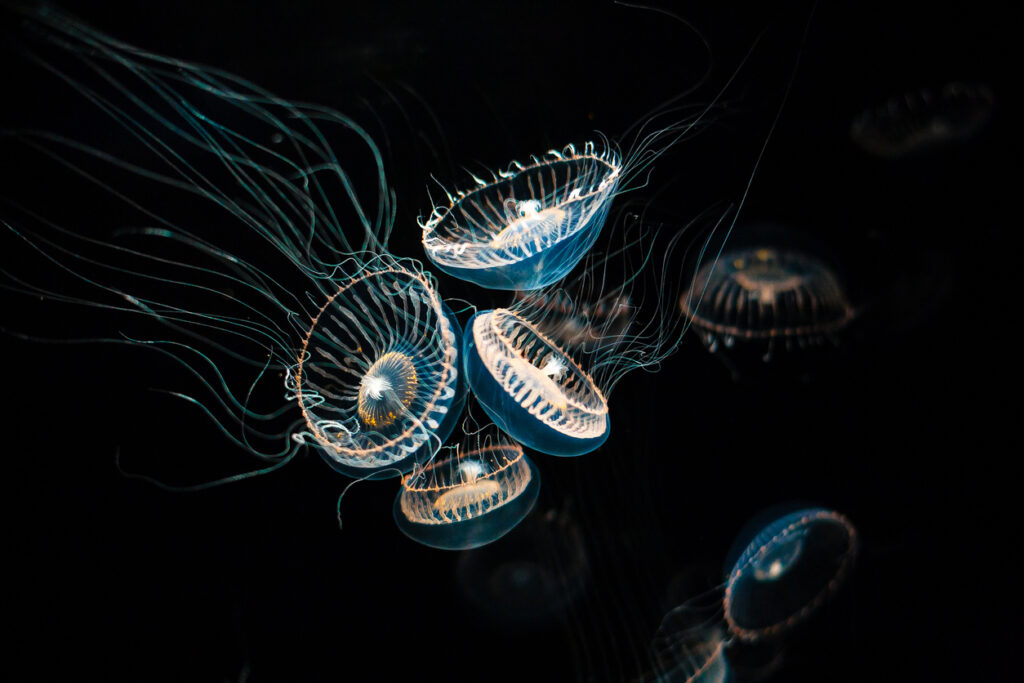
While space gives us stars and nebulas, the deep sea brings the glow straight to the body. Bioluminescence—the ability of living creatures to produce light—is incredibly common in the ocean’s darkest depths. In fact, scientists estimate that up to 90% of deep-sea organisms have some form of built-in glow. From anglerfish dangling headlights over their teeth to comb jellies pulsing with rainbow-colored light, the deep ocean turns total darkness into a dance of shifting hues and eerie flashes. It’s not just beautiful—it’s functional. Some species use it to attract prey, while others use it to disappear, lighting up their undersides to blend in with the faint surface glow above and confuse predators.
In contrast to the cold silence of space, bioluminescence in the ocean is alive, adaptive, and responsive. Scientists at the Smithsonian have documented deep-sea animals that coordinate flashes like morse code, using it for communication, mating, or even warning others of danger. One squid, Histioteuthis heteropsis, even has asymmetrical eyes—one large and yellow for spotting bioluminescence, the other small and dark for detecting silhouettes above. It’s like every inch of their body is engineered for survival in darkness. Who needs distant starlight when entire ecosystems glow from within? Source: Smithsonian Ocean
4. Deep Sea Vents May Hold the Origins of Life
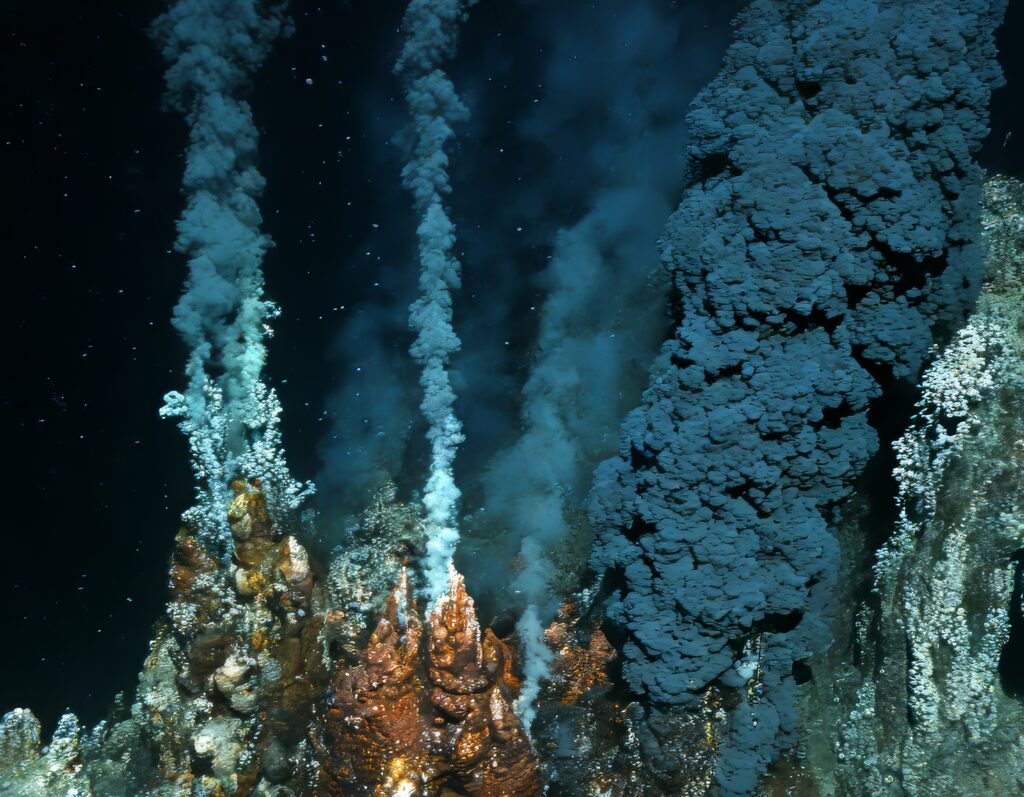
While space exploration searches for signs of life on frozen moons like Europa, some scientists believe we’ve already found life’s cradle right here in the deep ocean. Around hydrothermal vents, where superheated, mineral-rich water gushes from cracks in the seafloor, entire ecosystems thrive without sunlight. These vents can reach temperatures of over 700°F, yet tube worms, shrimp, and sulfur-eating bacteria form bustling colonies around them. Unlike surface life, which relies on photosynthesis, these organisms survive through chemosynthesis, using chemical reactions to convert energy from the Earth itself.
Many astrobiologists think this is the most likely blueprint for how life could exist elsewhere in the universe. In fact, some argue that life began in Earth’s ocean vents around 4 billion years ago, not in tidepools or on land. The logic? These extreme environments provide the heat, pressure, and raw materials necessary to assemble organic molecules into living cells. The Woods Hole Oceanographic Institution has even launched missions to model how these conditions could be replicated on other ocean worlds. So while we gaze outward for extraterrestrial life, the origin story might be bubbling beneath us, shrouded in steam and mystery. Source: Woods Hole Oceanographic Institution
5. It’s a Living Pressure Cooker That Defies Physics
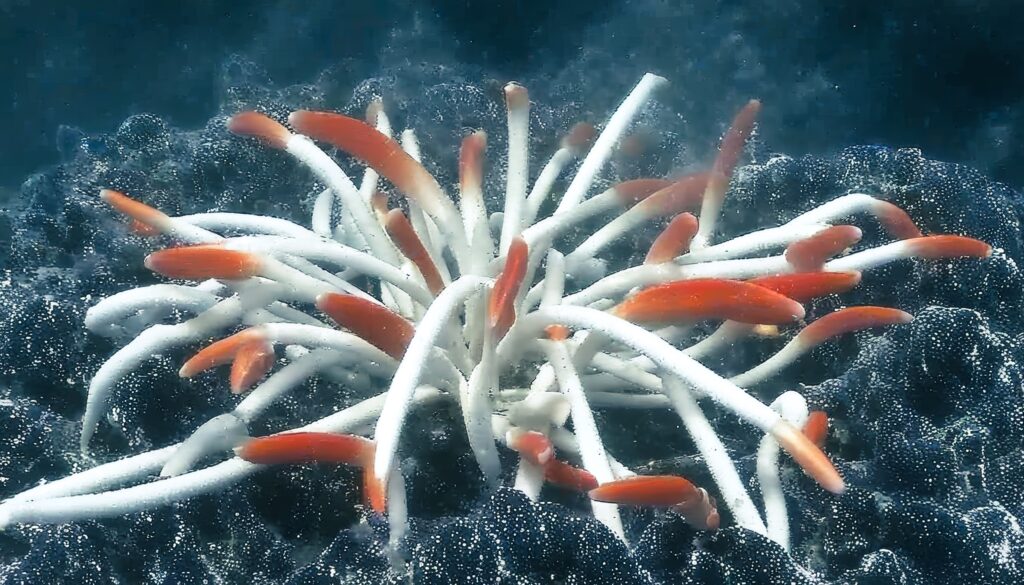
The deeper you go into the ocean, the stranger the rules of nature seem to become. At extreme depths, pressure builds at about 15 pounds per square inch every 33 feet, meaning at 36,000 feet in the Mariana Trench, pressure exceeds 1,000 times what we experience at sea level. That’s enough to crush human lungs, implode a submarine, or turn metal brittle. And yet, deep-sea animals not only survive, they thrive. Many of them have gelatinous bodies with no air-filled spaces, allowing them to endure crushing forces without damage. Others, like deep-living amphipods, have been found with aluminum armor derived from seafloor sediment, a natural shield against the environment.
What’s especially mind-bending is how some proteins and enzymes within these creatures actually work better under pressure. A study published by the University of Tokyo found that certain deep-sea fish evolved cellular adaptations to keep their nervous systems functioning in what should be a lethal environment. These are biological hacks that NASA and biotech companies are now studying to design pressure-resistant materials for space, medicine, and deep-sea robotics. It’s one thing to survive the abyss, it’s another to adapt so completely that the impossible becomes your normal. Source: University of Tokyo Deep-Sea Biology Program
6. Deep Ocean Ecosystems Run Without the Sun
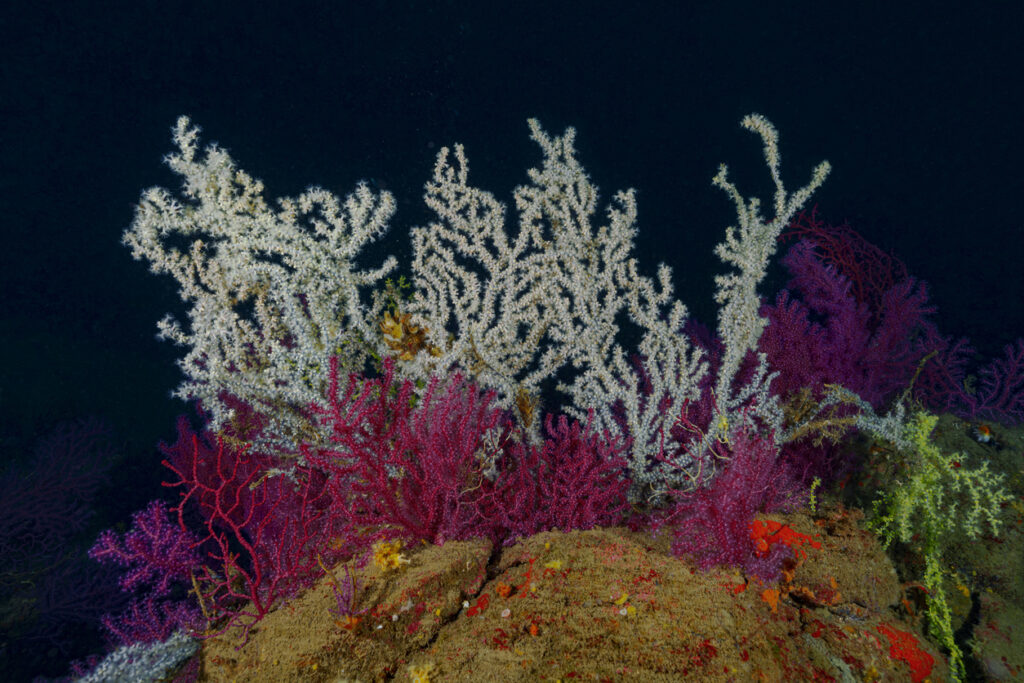
Most life on Earth relies on sunlight, but the deep ocean proves ecosystems can flourish in total darkness. Below the photic zone, roughly 650 feet down, sunlight disappears completely, yet entire food webs persist. Instead of plants and photosynthesis, life here depends on marine snow (a slow rain of dead organisms from above), chemosynthetic bacteria, and even whale falls, sunken carcasses that become entire self-contained cities for decades. A single whale fall can host over 100 species of worms, crabs, and fish, including ones found nowhere else on Earth.
These ecosystems operate on radically different timelines. Creatures may go months without eating, reproduce infrequently, or live for hundreds of years. According to the Scripps Institution of Oceanography, deep-sea coral colonies in the Pacific have been carbon-dated to over 4,000 years old, making them some of the oldest living organisms on the planet. The absence of sunlight doesn’t mean lifelessness, it means life has found new ways to evolve, interact, and endure. Outer space might be vast, but it’s mostly sterile. The deep ocean, by contrast, is an ongoing miracle of creativity and survival, just beneath our feet.
Source: Scripps Institution of Oceanography
7. We Can Actually Go There (But Barely)
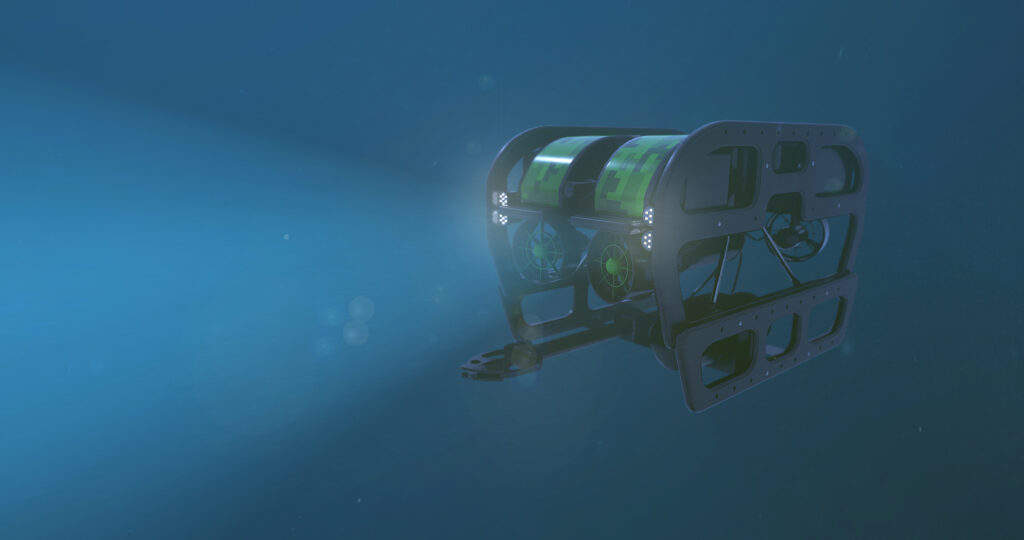
Space tourism may be trending, but for most of us, a trip to the cosmos is still fantasy. The deep ocean, on the other hand, is technically reachable—though no less daunting. Only a handful of humans have descended to the ocean’s deepest point: the Challenger Deep in the Mariana Trench, nearly 36,070 feet below sea level. That’s deeper than commercial airliners cruise above Earth. In 1960, Jacques Piccard and Don Walsh made the first manned descent in a reinforced steel sphere; it was so dangerous, their viewport cracked on the way down. It took over 50 years before another person, filmmaker James Cameron, returned in a solo sub in 2012.
Even with modern tech, the journey is a harrowing descent into freezing cold, total darkness, and bone-crushing pressure. Submersibles must be engineered like spacecraft, and expeditions are limited to elite scientists, billionaires, or deep-sea explorers with serious funding. Yet it’s here on Earth, just beneath the waves where we can come face-to-face with ancient lifeforms and alien landscapes. The ocean is no less mysterious than space, but it’s ours to study, protect, and explore. If outer space is the final frontier, the deep ocean might just be the first one we forgot. Source: National Geographic – Deep Sea Exploration
Before We Launch, Let’s Look Down
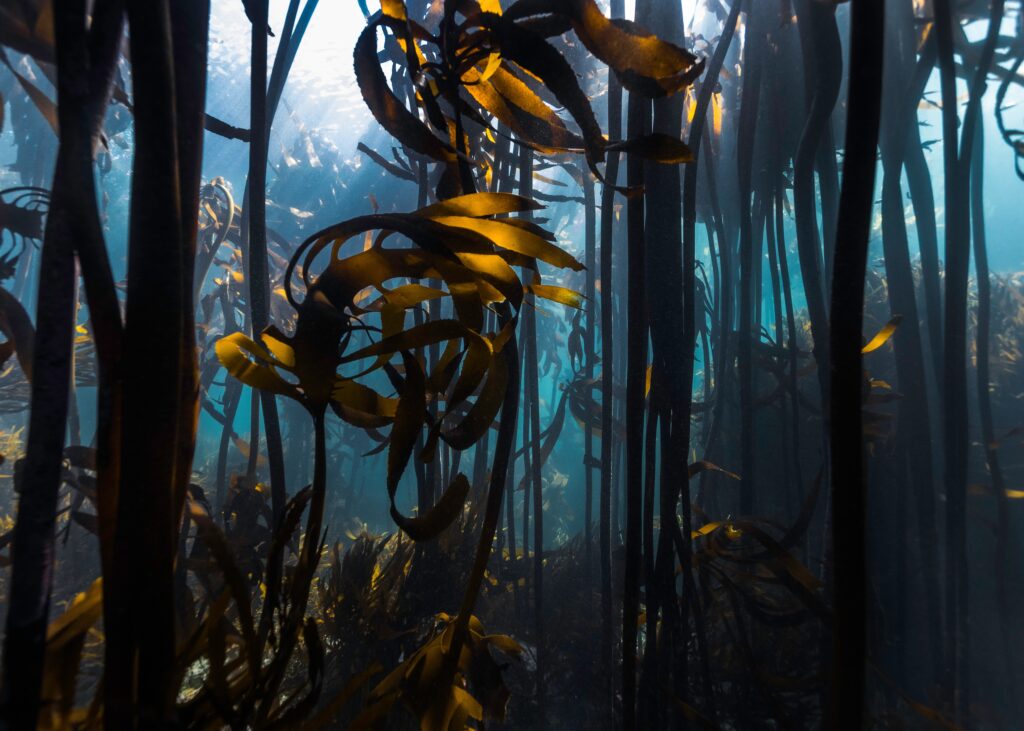
We spend billions looking up, but maybe the most magnificent mystery is right here at sea level. The deep ocean isn’t just a watery wasteland—it’s a living, glowing, pressure-defying world of ancient secrets and alien life. It’s where time slows down, evolution goes off-script, and we’re constantly reminded how little we actually know. Space might be vast, but the ocean is visceral. It’s touchable, tangible, and in desperate need of attention—not just exploration, but protection.
So before we launch the next satellite, maybe we take a deeper dive. If you loved this story or want to pitch us a mystery from the deep you think deserves the spotlight, let us know! And if this blew your mind even half as much as a glowing jellyfish in pitch-black water, give us a thumbs-up so we know you want more stories like this from Fetch.


